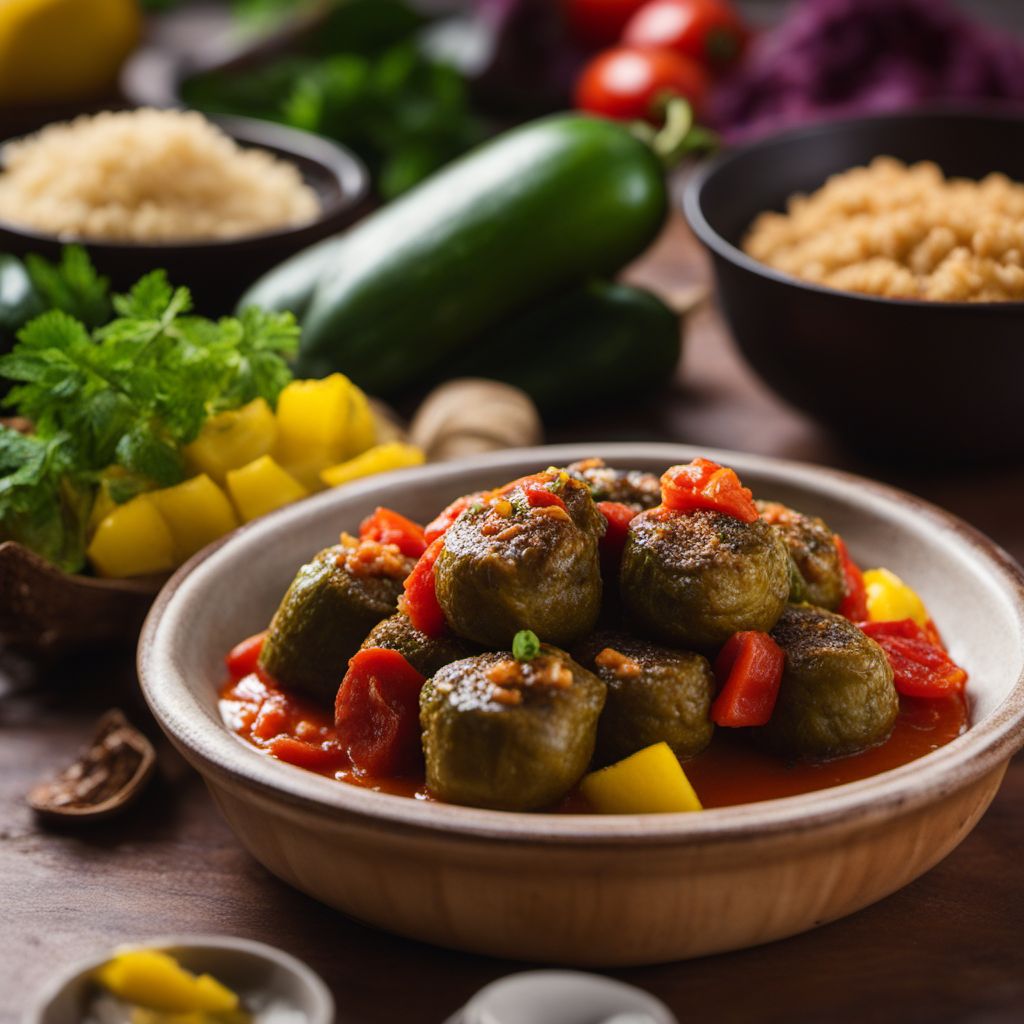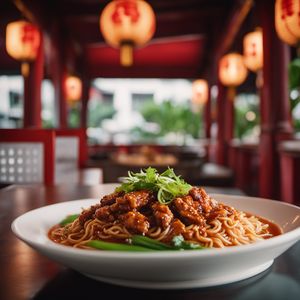
Dish
Mahshi
Mahshi can be made with a variety of vegetables, such as zucchini, eggplant, peppers, or grape leaves. The rice in the filling can be substituted with quinoa or cauliflower rice for a low-carb option. The ground meat in the filling can be substituted with lentils or chickpeas for a vegetarian or vegan option. Mahshi can be served with a variety of sauces, such as tahini sauce or yogurt sauce.
Origins and history
Mahshi has been a popular dish in the Middle East for centuries. The dish is believed to have originated in the Ottoman Empire and was spread throughout the region by traders and travelers. Today, mahshi is still a staple in many households and is enjoyed year-round.
Dietary considerations
Mahshi is suitable for vegetarians or vegans if made with a meatless filling. The dish is also gluten-free if made with a gluten-free grain, such as quinoa or rice. However, it may not be suitable for those with nut allergies if made with tahini sauce.
Variations
There are many variations of mahshi depending on the region and personal preference. Some recipes call for the addition of herbs, such as parsley or mint, to the filling. Some recipes also call for the addition of nuts or dried fruit to the filling for a sweet and savory flavor.
Presentation and garnishing
Mahshi can be presented on a large platter with the sauce or topping drizzled over the top. Garnish with fresh parsley or mint for a pop of color.
Tips & Tricks
To make the vegetables easier to hollow out, use a melon baller or small spoon. Use toothpicks to secure the filling inside the vegetables before baking or simmering.
Side-dishes
Mahshi is typically served with a side of rice or a simple green salad. Other popular side dishes include hummus, baba ghanoush, or tabbouleh.
Drink pairings
Mahshi pairs well with a light white wine, such as Sauvignon Blanc or Pinot Grigio. For a non-alcoholic option, try a mint lemonade or iced tea.
Delicious Mahshi recipes
More dishes from this category... Browse all »

Balandėliai
Lithuanian cuisine

Banjalučki ćevapi
Bosnian cuisine

Beyti kebab
Turkish cuisine

Biber dolması
Turkish cuisine

Biftekia
Greek cuisine

Buletten
German cuisine

Bò lá lốt
Vietnamese cuisine

Carne entomatada
Mexican cuisine
More cuisines from this region...

Eurasian cuisine of Singapore and Malaysia
Spicy, Sweet, Sour, Savory

Malay cuisine
Spicy, Sweet, Sour, Salty, Umami

Malaysian Chinese cuisine
Spicy, Sweet, Sour, Salty, Umami

Malaysian Indian cuisine
Spicy, Sweet, Sour, Salty, Umami

Peranakan cuisine
Spicy, Sweet, Sour, Salty, Umami

Sabahan cuisine
Spicy, Sour, Sweet, Savory

Sarawakian cuisine
Spicy, Sour, Sweet, Savory
